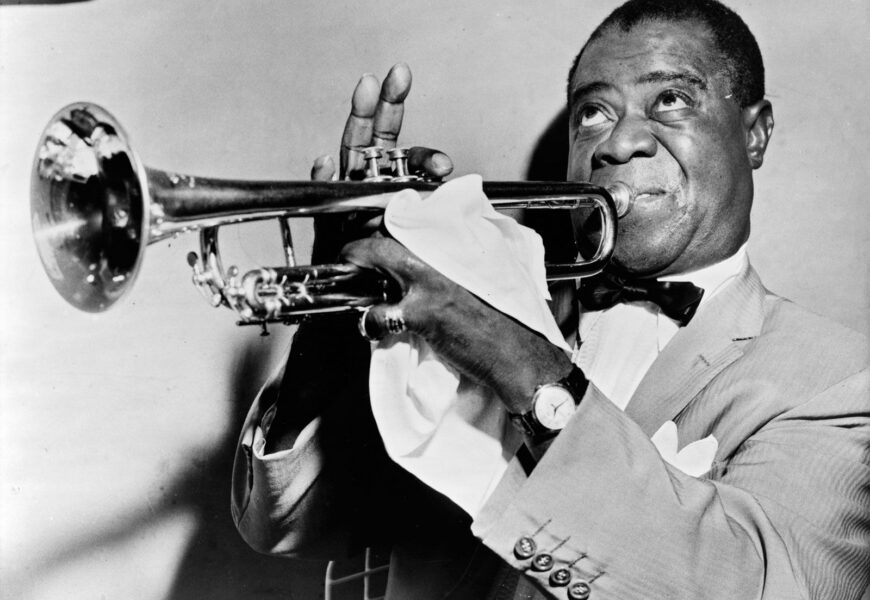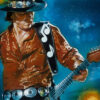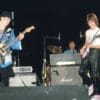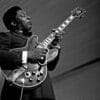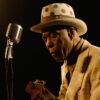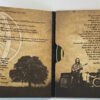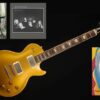Blues music evolved into jazz as musicians combined its structure with improvisation and syncopation. Jazz emerged in the early 20th century, influenced by African American musical traditions.
The transformation from blues to jazz is a tapestry woven with cultural complexity and artistic innovation. Originating in the deep South of the United States, blues music laid the groundwork with its emotive chords and calls-and-response patterns. As these melodies traveled up the Mississippi River, they mingled with other musical styles, including ragtime and European classical influences.
In the melting pot of New Orleans, a city teeming with diverse sounds, blues found a new expression in the form of jazz. This genre was characterized by its swing rhythms and a greater emphasis on solo performances. African American musicians played a pivotal role in this evolution, infusing their songs with both the soulfulness of their heritage and the dynamism of creative freedom. The result was a musical revolution that would reshape the cultural landscape and give voice to a new, improvisational form of expression.

Credit: www.amazon.com
Origins Of Blues Music
The Origins of Blues Music are as intriguing as the melodies themselves. Blues is a music genre that narrates the tale of deep emotions and human experiences. Its journey is essential in understanding the evolution of jazz music.
African Musical Influences
Blues music has deep roots in African traditions and sounds.
- Call-and-response patterns: Vital in African music; adopted in blues.
- Blue notes: Expressive pitches reflect African scales.
- Rhythmic complexity: Complex African rhythms are evident in blues beats.
Instruments like the banjo and diddley bow are African in origin but crucial to blues music.
The Delta Blues
The Delta Blues emerged from the Mississippi Delta. This raw form of blues is the foundation upon which jazz would grow.
| Characteristics | Notable Artists |
|---|---|
| Acoustic guitar-driven | Charley Patton |
| Emotional vocals | Robert Johnson |
| Slide guitar techniques | Son House |
Chicago Blues
The Chicago Blues signaled blues’ urban transition. It showcased electrification of instruments.
- Electric guitars amplified the sound.
- Harmonicas introduced a different texture.
- Drum sets emphasized rhythm.
This style contributed to the development of jazz by introducing more instruments and bolder sounds.
Characteristics Of Blues Music
The roots of blues music set the stage for one of the most influential genres in music history—jazz. Understanding the characteristics of blues music reveals how its DNA seeped into jazz, reshaping music’s landscape forever. The essence of blues lies in its distinct musical structures, expressive notes, and the freedom it gives musicians to engage and improvise.
12-bar Blues Structure
The 12-bar blues is a foundational element of blues music. This structure is a repeating pattern that forms the skeleton of many blues songs. Let’s examine this musical blueprint:
- A 12-bar cycle repeated throughout the song.
- Three chords are typically used: the I, IV, and V chords.
- Four bars of the I chord, two bars each of the IV and I chord, one bar each of the V and IV chord, and a final two bars of the I chord to round it off.
Emotional Expression
Blues music acts as a conduit for raw emotion. Every note and lyric aims to express feelings, often of sorrow or hardship. This emotional depth is a key ingredient in the blues, frequently reflected in the soulful vocal delivery and the moaning bends of the guitar strings.
Call And Response
One defining feature of blues music is the call and response. This technique stems from African musical tradition, involving a statement by the singer (the call) and a direct musical answer (the response). It’s a dialogue between the musician and their instrument, or between ensemble members, which encourages a dynamic interaction within the performance.
Improvisation
Improvisation lies at the heart of blues music—and later, jazz. Blues musicians weave spontaneous musical phrases over the steady structure of the 12-bar blues. This improvisation allows for personal expression and significantly contributes to the music’s emotional impact. Each performance can tell a different story, depending on how the musician feels in the moment.
Migration And Urbanization
The birthplace of blues in the rural South set the stage for profound cultural shifts. These African American sounds trickled out, following the paths of those seeking new opportunities. The migration northward and the flowering of urban areas played pivotal roles in this musical journey. As these communities grew, they became fertile ground for the evolution of music. From southern soil, the blues wove into the vibrant, complex tapestry of jazz.
Great Migration
During the early 20th century, many African Americans left the South. They sought jobs, respect, and a chance to escape harsh laws. This movement, known as the Great Migration, saw over six million move to northern cities.
- People brought their music to Chicago, New York, and more.
- Blues met other styles and new instruments.
- Musicians blended and improvised, creating fresh sounds.
Jazz’s Rise In Urban Areas
In the bustling cities, blues music found new life. Clubs and dancehalls flourished, with people eager for entertainment. These urban centers became hotbeds for musical innovation:
- Jazz captured the fast pace of city life.
- Pianos and brass added to earlier blues sounds.
- Music became a mix of structure and spontaneity.
As factories whirred, jazz thrived. Each city contributed its flavor, shaping jazz’s unique rhythms and melodies. Musicians like Louis Armstrong became legends. They turned nights into vibrant celebrations with their soaring notes. In this lively melting pot, jazz emerged, a genre forever marked by its blues ancestry and the pulsing life of urban America.
Early Jazz And Its Connection To Blues
Understanding the roots of jazz leads us back to the late 19th century. Blues music, a soulful creation from African American communities, set the stage. It mingled with other styles, birthing early jazz. This new sound took the blues’ expressive melodies and harmonic structures to create something fresh and dynamic.
New Orleans Jazz
New Orleans, the melting pot of cultures, served as the cradle for early jazz. The city’s vibrant music scene nurtured this novel genre. Musicians blended African rhythms with European harmonies and instruments. This fusion created a unique sound reflecting New Orleans’ diverse heritage.
- Rhythm – Syncopated beats.
- Melody – A mix of complex and simple tunes.
- Improvisation – A key feature in jazz.
New Orleans jazz bands featured trumpets, clarinets, trombones, and rhythm sections. These sounds spread through dance halls and community gatherings. They encapsulated the city’s joyous spirit and storytelling tradition.
Blues Influence In Early Jazz
Blues music exerted a powerful influence on early jazz. Its impact is clear in the jazz structure and sound. Jazz musicians took the 12-bar blues form and decorated it with their own improvisations. This merger kept the blues’ emotional depth while adding harmonic complexity.
| Blues Element | Influence on Jazz |
|---|---|
| Call-and-Response | Formed the basis of jazz interplay between instruments. |
| Blues Scale | Provided a template for jazz solos. |
| Lyrical Expression | Inspired jazz’s emotive playing style. |
Jazz artists like Louis Armstrong took these elements to heart. They poured soul into each performance, using the blues ethic of storytelling. This connection reinforced the relationship between individual expression and collective improvisation, a hallmark of jazz.
Jazz’s Evolution In The 1920s
The 1920s were a time of remarkable transition in music. As blues music evolved, it intertwined with other genres and gave birth to jazz. This era, now famously known as the Jazz Age, witnessed the development of a distinctly American sound that would captivate the world.
Influence Of Ragtime
Ragtime’s upbeat melodies and lively rhythms set the stage for jazz. Originating in the late 19th century, ragtime introduced syncopated beats. These beats became a cornerstone of jazz’s unique sound. Notable composers like Scott Joplin bridged ragtime to jazz, influencing early jazz pianists and setting a foundation for the genre’s evolution.
Jazz Bands And Soloists
During the 1920s, jazz bands became the heart of the music scene. New Orleans gifted the world with vibrant multi-instrumental bands. Soloists within these bands emerged as stars, captivating audiences with their skill. Improvisation in jazz led to a personalization of performances, making each act a unique experience.
Swing And Big Bands
- Swing music rose from the roaring twenties.
- It brought together larger ensembles known as big bands.
- The era saw bandleaders like Benny Goodman and Duke Ellington
- They popularized swing nationwide.
- Dance halls filled with the sounds of big bands, defining the decade’s spirited social scene.
Influence Of Blues Singers
The soulful vocal expression of blues singers laid an emotional foundation for jazz. Blues singers like Bessie Smith and Ma Rainey brought depth and storytelling to the music. Their powerful voices and emotive delivery enriched jazz, infusing it with a deeply personal touch that resonated with audiences across social divides.

Credit: www.etsy.com
The Harlem Renaissance
The Harlem Renaissance stands as a pivotal era in American History. It was a time marked by a flourishing of African American culture. This cultural explosion resonated through music, with blues and jazz at the forefront. During the 1920s and 1930s, Harlem became the mecca for these musical styles. Let’s discover how the blues evolved into jazz during this transformative period.
Artistic And Cultural Movement
Harlem emerged as a beacon for black artists and intellectuals. Writers, painters, and musicians flocked to Harlem. They sought to redefine African American expression. Blues and jazz became the soundtrack to this cultural awakening.
Blues Artists In Harlem
- Bessie Smith and Ma Rainey brought the deep, soulful sound of the blues northward.
- They played in smoky clubs and crowded speakeasies.
- Their heartfelt lyrics spoke of life’s struggles, resonating with Harlem’s community.
Jazz’s Connection To The Renaissance
Blues laid the groundwork for jazz in Harlem. The improvisational nature of jazz found a perfect home among Harlem’s nightspots. Legends like Louis Armstrong and Duke Ellington revolutionized music here. They blended blues’ emotive tones with faster rhythms and brass instruments. They transformed jazz into a global phenomenon.
The impact of the Harlem Renaissance continues to echo. It set the stage for future generations of African American artists and musicians. The transformation from blues to jazz is a testament to this vibrant era’s enduring legacy.
The Influence Of African American Musicians
The Influence of African American Musicians on the evolution from Blues to Jazz is profound. Early Blues laid the groundwork for the complex rhythms and melodies of Jazz. African American musicians brought their unique sounds and improvisational skills. They turned the deep emotions of Blues into the energetic and sophisticated Jazz. Here are a few legends whose musical genius was instrumental in this transformation.
Louis Armstrong
Louis Armstrong, a trumpet player and singer, revolutionized Jazz. His amazing skill to play the trumpet made everyone listen. He added a personal touch to his music. This helped shape Jazz into a soloist art form. His influence cannot be overstated. He introduced scat singing. This took Jazz vocals to new heights. His recordings from the 1920s are vital in understanding Jazz’s development.
Duke Ellington
Duke Ellington was a legendary pianist and bandleader. His band played at the famous Cotton Club in Harlem. His music blended classical, blues, and jazz elements. This created a sophisticated sound known as “swing”. Ellington composed thousands of pieces. This shaped Jazz as a serious and respected genre.
Billie Holiday
Billie Holiday brought a unique voice to Jazz. Her phrasing was like an instrument. It conveyed deep emotions through music. Holiday faced many challenges in life. Her songs reflect her struggles with power and nuance. She inspired many Jazz vocalists that followed. Her song “Strange Fruit” is a haunting piece. It shows her ability to deliver a powerful message through song.
Charlie Parker
Charlie Parker, also known as “Bird”, was a saxophone genius. His techniques were advanced. His style was fast-paced and complex. This was known as “bebop”. Bebop was a major shift in Jazz. It focused on fast tempos and improvisation. Parker’s music was a leap forward for Jazz. It influenced countless musicians. Parkers’ working with Dizzy Gillespie was iconic. It brought bebop to the forefront of Jazz.
Jazz And Blues Convergence
The convergence of jazz and blues marks a pivotal moment in music history. These two genres, rooted deeply in African American heritage, danced closely together to form a new, dynamic sound. Understanding their interplay is like unraveling a musical tapestry woven with passion and complexity.
Blues Elements In Jazz
Jazz music embraced blues elements to enrich its sound. Musicians borrowed the expressive 12-bar chord progressions and ‘blue notes’ known for their bent pitches. These elements painted jazz with deeper emotional layers. Dominant 7th chords, a staple in blues, found their home in jazz compositions, offering a raw, soulful edge.
Jazz Improvisation
Jazz improvisation is a thrilling spectacle. Musicians venture beyond the written notes, each performance unique. Improvisation in jazz took inspiration from the blues, where musicians often expressed spontaneous feelings. This freedom allows for personal expression and interaction, injecting life into performances.
Cross-pollination Of Styles
The blues and jazz benefited from a mutual exchange of styles. Artists like Louis Armstrong and Bessie Smith bridged genres, influencing one another. The result was a cross-pollination that birthed jazz standards infused with blues narratives, rhythms, and sensibilities. Jazz musicians weren’t shy to stride into blues territory, while blues performers often swung towards jazzy arrangements. This beautiful melding created an ever-evolving musical landscape.
The Birth Of Bebop
Bebop emerged as an innovative jazz form, evolving from the deep roots of blues music. This transition marked a significant shift, as musicians incorporated blues elements into more complex jazz arrangements. Jazz artists thus transformed the simplicity of the blues into the intricate melodies and improvisations of bebop.
In the 1940s, a new jazz style emerged. This spirited, dynamic music was called bebop. It marked a significant turn from the danceable tunes of the swing era. Jazz musicians sought a fresh, more intricate sound. This search birthed bebop, redefining jazz’s future.
Rejection Of Commercialization
Bebop developed as a rebellion. Artists wanted to break free from swing’s commercial grip. They aimed to return jazz to its artistic roots. This shift marked a new era. Musicians began exploring improvisation and personal expression.
Charlie Parker And Dizzy Gillespie
Charlie Parker and Dizzy Gillespie led the bebop revolution. These virtuosos crafted a sound unlike any before. Their phenomenal skill set new standards. They inspired countless musicians, shaping jazz’s evolution.
Complex Harmony And Fast Tempos
- Bebop favored rapid tempos and complicated chords.
- Musicians experimented with extended harmony.
- Improvisations became intricate, demanding high proficiency.
Bebop’s Impact On Jazz And Blues
Bebop’s influence was profound. It challenged the norms of melody and rhythm in jazz. Blues, the foundation for jazz, fused with bebop elements. This harmony created exciting, progressive music. Bebop revolutionized jazz, leaving a legacy in music history.

Credit: www.ebay.com
Cool Jazz And West Coast Jazz
The silky threads of blues music wove their patterns into the heart of jazz. This evolution birthed Cool Jazz and West Coast Jazz. Conceived in the late 1940s and 1950s, these genres offered a refreshingly smooth and sophisticated sound. Artists fostered a more relaxed tempo, providing a counterpoint to the high-energy swing and bebop eras. Let’s explore how iconic musicians sculpted these melodious forms.
Miles Davis
Miles Davis stands tall among the pioneers of Cool Jazz. His album, “Birth of the Cool,” is a landmark recording. Davis redefined jazz with a softer tone and complex arrangements. He integrated subtle harmonies and set the stage for a new direction in jazz music.
Chet Baker
| Contributions of Chet Baker | |
|---|---|
| Influential Albums | Chet Baker Sings, It Could Happen to You |
| Signature Sound | Intimate, emotive trumpet playing and vocal style |
| Impact | Emblematic figure of the West Coast Jazz scene |
Laid-back And Subdued Style
- Relaxed Rhythms: Less aggressive than bebop.
- Subdued Dynamics: Gentle, quieter soundscapes.
- Cooler Vibes: Smooth, mellow atmosphere.
Incorporation Of Blues Progressions
- Blues progressions provided a foundation for improvisation.
- Cool Jazz expanded on this with innovative chords.
- West Coast Jazz used these progressions to create a distinct sound.
Jazz Fusion And Contemporary Blues
Jazz Fusion and Contemporary Blues mark the evolutionary leap within music, where boundaries meld to create soul-stirring sounds. This music marriage happened as artists infused traditional genres with fresh, vibrant elements.
Influence Of Rock And Funk
Blues and jazz intertwined with rock and funk to create a dynamic sound expression. They borrowed electric guitars from rock and rhythmic grooves from funk.
- Electric guitars added new texture to blues.
- Funk rhythms made jazz danceable.
- These elements brought appeal to wider audiences.
Miles Davis And Fusion
Miles Davis, a visionary trumpeter, ignited the fusion movement in jazz. His album ‘Bitches Brew’ fused jazz with electric instruments.
- Miles Davis released ‘Bitches Brew’ in 1969.
- This album blended jazz with rock and psychedelic sounds.
- It inspired an era of jazz-rock fusion.
Contemporary Jazz And Blues Artists
Today’s artists expand the legacy of blues and jazz. They blend traditional sounds with contemporary beats.
| Artist | Style |
|---|---|
| Robert Glasper | Jazz and hip-hop fusion |
| Tedeschi Trucks Band | New-age blues rock |
| Snarky Puppy | Instrumental ensemble with jazz-funk elements |
Blurring Genre Boundaries
Blues and jazz now cross lines with other genres. Artists create unique styles by blending different music types.
Hip-hop beats and electronic effects join jazz and blues. This mix results in a fresh sound that defies traditional labels.
Impact Of Blues On Modern Jazz
The crossroads of Blues and Jazz music is a historical junction where profound musical dialogue gave rise to what we now celebrate as modern Jazz. Understanding this impact sheds light on the genre’s evolution and reveals the roots from which contemporary Jazz musicians draw inspiration.
Blues As A Foundation
Blues music serves as the cornerstone for Jazz. Early Jazz musicians interwove Blues idioms into their performances, embedding its spirit into Jazz’s core. The structural robustness and emotional expressiveness of the Blues crafted a framework upon which Jazz could grow and diversify.
Continued Use Of Blues Progressions
Blues progressions maintain a vital role in Jazz compositions. The classic 12-bar Blues, with its I-IV-V chord sequence, evolved yet persists as a foundation in Jazz pieces. This progression’s adaptability has allowed Jazz artists to explore complex improvisations while staying tethered to their Blues roots.
Blues Aesthetics In Jazz
The aesthetics of Blues—its raw honesty and soulful nuances—left an indelible mark on Jazz. Phrasings typified by a call-and-response pattern transitioned seamlessly into Jazz, fostering a dialogue between musicians and their instruments that echoes the Blues tradition.
Melodic And Harmonic Influences
- Blue notes, typically flattened third, fifth, or seventh notes, form Jazz’s melodic vocabulary.
- Jazz harmonies borrowed the flexible pitch and expressive bends characteristic of Blues music.
- Improvisation reigns supreme in Jazz, a trait stemming from the spontaneous nature of the Blues.
Frequently Asked Questions Of How Did Blues Music Develop Into Jazz
How Did Blues Evolve Into Jazz?
Blues music, with its African American roots, laid a foundation for jazz. As musicians blended blues’ harmonic structures with improvisation and swing rhythms, jazz emerged as a distinct genre. This evolution occurred in the early 20th century in New Orleans.
How Did Blues Music Develop?
Blues music originated in the African-American communities of the American South. It evolved from spirituals, work songs, and field hollers in the late 19th century, reflecting hardships and expressing emotions. This genre laid the foundation for future American music styles.
What Is The History Of Jazz Vs Blues?
Jazz and blues share roots in African-American slave songs and spirituals. Blues emerged in the late 19th century, characterized by its use of the blue note and narrative lyrics. Jazz, developing in the early 20th century, grew from blues, adding complex harmonies and improvisation.
What Influenced The Start Of Jazz?
Jazz originated from African American communities in New Orleans, influenced by blues, ragtime, and marching band music. Cultural exchanges and improvisation also shaped its development.
What Are The Origins Of Blues Music?
Blues music originated in the African-American communities of the Deep South of the United States around the end of the 19th century, combining African musical traditions with American folk and country music styles.
How Did Jazz Evolve From Blues?
Jazz evolved from blues through the incorporation of diverse musical elements and instruments, improvisation, and by adopting complex harmonies and a broader rhythmic structure compared to traditional blues.
Who Are Key Figures In Blues To Jazz Transition?
Key figures in the transition from blues to jazz include musicians like W. C. Handy, often referred to as the “Father of the Blues,” and legendary jazz pioneers like Louis Armstrong and Duke Ellington.
What Role Did New Orleans Play In Jazz Development?
New Orleans played a pivotal role in jazz development as it was a melting pot of musical cultures, including blues, ragtime, and brass band marches, which all contributed to the early formation of jazz.
When Did Blues And Jazz First Overlap?
Blues and jazz began to overlap in the early 20th century when musicians in New Orleans started blending blues scales with improvisational jazz techniques, creating a new, distinct musical form.
What Distinguishes Jazz From Blues?
Jazz is distinguished from blues by its complex harmonies, polyrhythms, improvisation, and often faster tempos. Blues typically adheres to a 12-bar structure and a more emotive, soulful expression.
Conclusion
The journey from blues to jazz is a tale of musical evolution. This transformation encapsulates cultural shifts and artistic innovation. Blues laid the groundwork, infusing jazz with its soulful depth and expressive power. As we reflect on this enchanting progression, one thing is clear: jazz wouldn’t dance with such vibrancy without the blues’ rhythm in its roots.
Let’s keep exploring the melodies that connect our past to the present.

